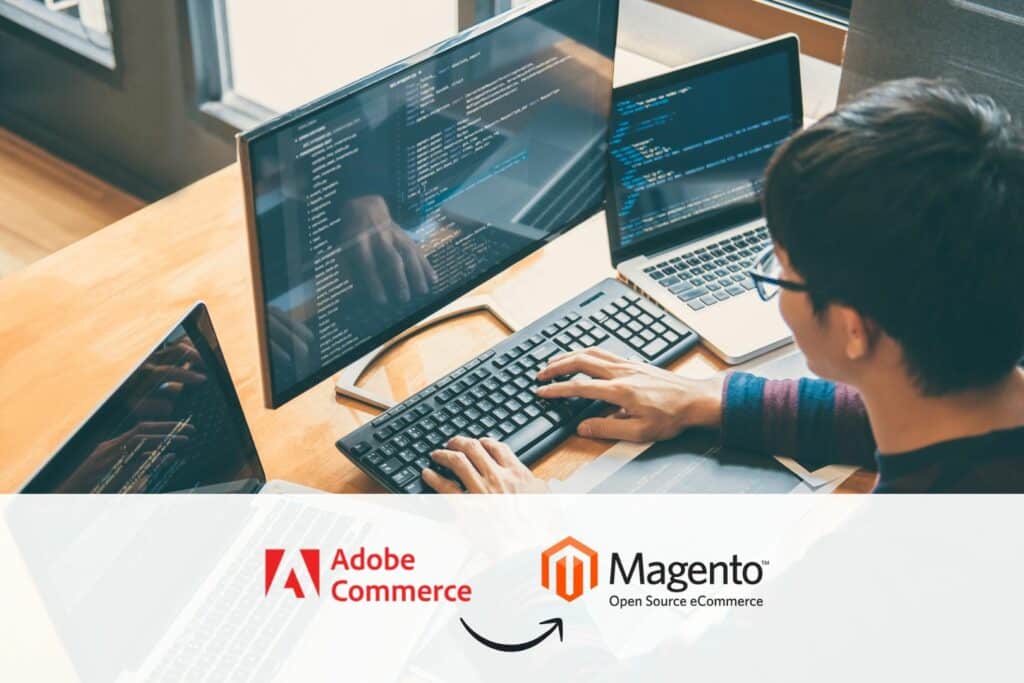If your top priority is to deliver an exceptional customer experience (CX), headless ecommerce can give you the flexibility you are looking for.
The future of CX will be based on agility, innovative uses of technology and personalization.
If you feel that your business is falling behind your competitors and you are frustrated by the constant challenges of coordinating front-end and back-end systems, then the time might be right to consider an alternative approach.
To keep up with the fast pace of change, headless commerce will uncouple the front-end online experience for your customers (the head) from all your back-office systems and processes. Developers can respond quickly to changing trends and test, review and revise new approaches.
What is headless commerce?
All the customer touchpoints for your ecommerce website such as the shopping cart, search field, product listings, and product images are part of the presentation layer of your platform. In the background a whole range of business systems and processes confirm stock availability, accept payments, and confirm orders.
Typically, to provide the seamless experience customers expect, your developers and internal users must follow rules and processes to maintain this functionality. Changing product information or your customers’ experience will normally involve updates to databases, coding and web design, so even a small change could become a significant business risk.
A headless commerce solution holds your content and makes it accessible to display on any device using RESTful application programming interfaces (APIs). It allows you to create the best online experience for your customers independently of the technical restrictions of your back-office systems and processes.
Independence and innovation
With fewer constraints, developers can deliver world-class customer experiences. They can create advanced online journeys and features much more quickly and efficiently with much less risk to the wider business.
An added benefit is that you can choose developers with the best skills to create the buyer experience you want. They don’t need to know the detail of your background systems. This can save you time and money and make your business really agile; creating, testing and launching the best and latest innovative approaches confidently and quickly.
If you are looking for a solution that gives you the freedom to choose best-of-breed back-office systems independently, while retaining leading-edge CX, then headless commerce should be included in your considerations.
CX without limits
Interest in headless commerce is being driven, in part, by the need to deliver a smooth customer experience across multiple channels and delivery processes. It allows you to meet or even pre-empt customer demands and to release new transactional touchpoints without restructuring your back-office.
Above all, you can continue to deliver consistent customer experiences across all devices and channels. For example, using information about each customer’s buying behavior you can customize their experience on mobile apps and social channels as well as in your online store.
The scope for your developers is almost limitless. They can create different experiences for any number of screens, devices, and channels, with different layouts for mobile apps or a smartwatch interface, for example.
Enhanced security
The API used to deliver content in a headless commerce solution also makes your platform more resilient to online threats. Headless content management is easier to monitor and control because it works as both as an application layer and a security layer. It also decreases the risk of critical failure.
Administration of a headless system also offers additional security when hosted on a different server and with your content management system (CMS) functionality concealed by layers of code.
However, while many more traditional platforms include ongoing security patches and upgrades, developers of a headless solution will need the skills to deliver upgrades and troubleshoot any problems themselves.
Seamless Integration
Using a RESTful API to deliver headless commerce also makes it easier to integrate with other platforms and business systems.
Customer self-service workflows can be streamlined, and support requests and other questions can be easily checked to avoid duplication and to create new customer records.
Whether you already have an established infrastructure, or you are still developing an overall system architecture for your business, headless commerce can make things simpler.
Is headless right for your business?
Headless commerce won’t be the best solution for every business, but here are some questions that might help you to decide:
Do you have a content marketing strategy to bring more organic traffic to your site?
For brands that rely on high quality content, headless commerce allows them to make it a high priority. To create a headless approach isn’t a simple ‘out-of-the-box’ process, so it requires commitment to significant initial development as well as ongoing maintenance and management.
Does your reputation rely on innovation and creativity?
Whether your focus is on business to business (B2B) or business to consumer (B2C) sales, the quality of your online content is becoming a point of differentiation. To remain competitive many businesses are pressing ahead with intensive content strategies. Headless commerce can help you to keep your content fresh, engaging and innovative.
How many of your customers use mobile devices?
By 2021 it’s estimated that mobile ecommerce sales will account for over half of the total. According to Google, 85% of people start shopping on one device and finish shopping on another, so mobile responsiveness is inescapable for almost all businesses. By using headless commerce and progressive web apps (PWAs) you can create and renew unique app-like experiences for your customers, whatever device they use.
Which businesses are most likely to benefit from headless commerce?
The deciding factor will need to be your business strategy and the overall implications of agility versus stability. There aren’t any rules about which businesses will benefit from a headless approach but, in general, it can suit:
- bigger businesses with complex or unique rules and ordering processes
- organizations that have multiple existing enterprise systems that need to be integrated with ecommerce
- businesses that already have an advanced CMS
- brands that rely heavily on fast-moving, high-quality content
- younger businesses that are growing quickly
- groups of companies with multiple brands and divisions.
If you are interested in finding out more about headless commerce for your business, talk with one of our experts.








